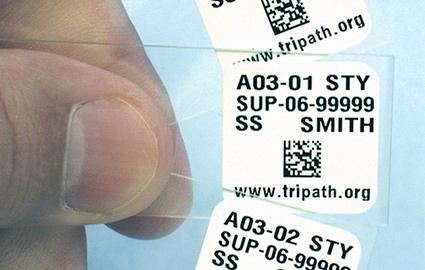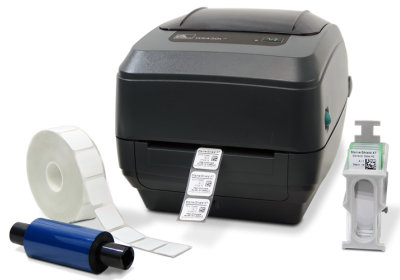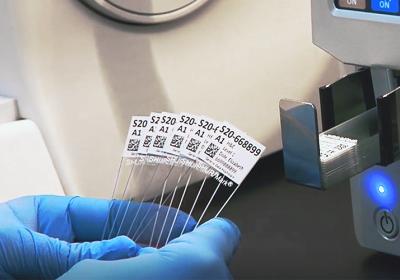Extended Xylene Exposure
If you are a histology lab needing a xylene-resistant label for your slides, be aware that “xylene resistance” is a claim commonly made by all kinds of labels. But just how xylene-resistant are they? We tested StainerShield XT’s resistance to xylene by completely immersing the label in xylene for 1, 2, 3 and 4 hours:
Before considering any other label, be sure to test and confirm its xylene resistance can match StainerShield XT.
Reagent and Stain Exposure
StainerShield XT can withstand extended exposures to the reagents and stains used in histology staining protocols without fading or absorbing any of the stain color. In this test, we used a full 18 minute Hematoxylin and Eosin protocol in an automated stainer, as well as complete manual immersion in both Hematoxylin and Eosin:
Note how the hydrophobic properties of StainerShield XT labels prevent any discoloration of the label whatsoever, even after being processed in an automated stainer and being completely immersed manually.
Microwave Processing, Temperature Extremes and Pressure
Microwaves are commonly used in histology labs for slide preparation. Other commonly-used devices include Decloaking Chambers, Pascal units, and other devices that utilize heat, pressure and high pH buffer solutions for slide preparation. How well do StainerShield XT slide labels perform when subjected to these environments, as well as temperature extremes?
Retention and Archival
Histology labs are required to retain slides for 10 years – or more in some cases. In addition to surviving the staining and slide preparation processes, the slide label cannot fall off the slide at any time when it is archived. StainerShield XT slide labels are certified to meet or exceed retention standards and guidelines from the Library of Congress, CLIA and CAP:
The conclusion? Histology labs that need slide labels should use the slide labels designed specifically for histology labs: StainerShield XT.



